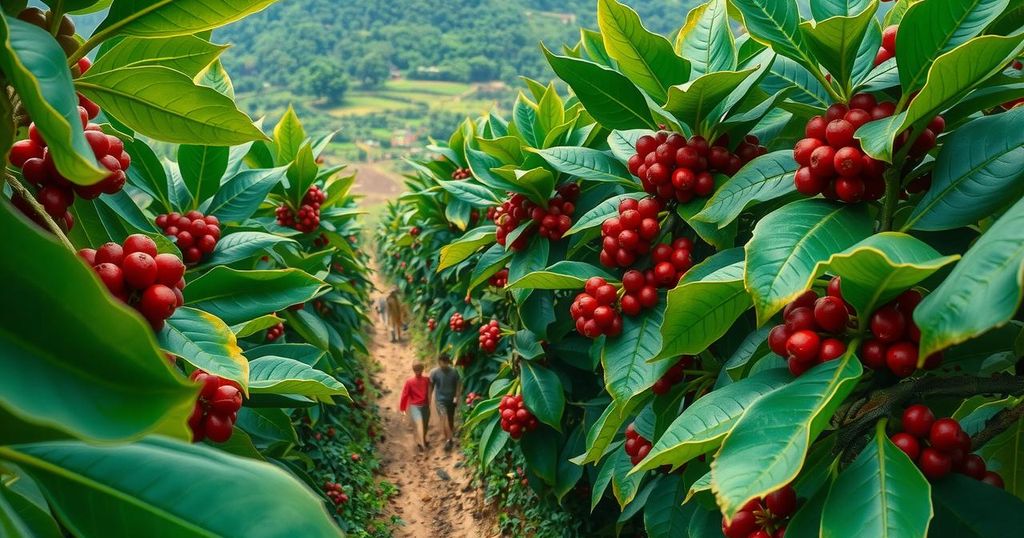Coffee prices are rising due to drought conditions in Brazil and a strengthening Brazilian real. Forecasts indicate a slight increase in coffee production for 2024/25, but declining inventories may create significant deficits, particularly for the 2025/26 season.
Coffee prices are rising, influenced by low rainfall in Brazil and the strengthening Brasilian real. On March 15, Minas Gerais, Brazil’s primary arabica coffee region, recorded only 30.8 mm of rain, equating to 71% of the historical norm. This situation is expected to impact production figures significantly moving forward.
The Brazilian real’s strength has given additional support to coffee prices, as increased value can enhance export competitiveness. The Brazilian coffee output forecast for 2024/25 predicts a year-on-year increase of 4% to 174.855 million bags, including a 1.5% rise in arabica production, totaling 97.845 million bags, and a robusta increase of 7.5% to 77.01 million bags.
The USDA’s Foreign Agricultural Service (FAS) indicates a critical decline in coffee stocks for the 2024/25 season, projecting a fall of 6.6% from 22.347 million bags in 2023/24 to a 25-year low of 20.867 million bags. Additionally, the FAS has downgraded its coffee production forecast for Brazil to 66.4 million metric tons for 2024/25, down from 69.9 million metric tons as previously estimated.
For the 2025/26 marketing year, Volcafe has revised its Brazilian arabica production prediction down to 34.4 million bags, reflecting the severe impact of the ongoing drought. Further, a global arabica coffee deficit of 8.5 million bags is anticipated for 2025/26, surpassing the 5.5 million bags forecasted for the current season, marking five years of continuous deficits.
The coffee market is experiencing price increases driven by unfavorable weather conditions in Brazil and a strong Brazilian real. With production forecasts being downgraded and a significant drop in coffee inventories projected, the global coffee supply may face challenges, leading to substantial deficits in the coming years. Stakeholders should monitor these trends closely, as they can have significant implications for the coffee market.
Original Source: www.tradingview.com






